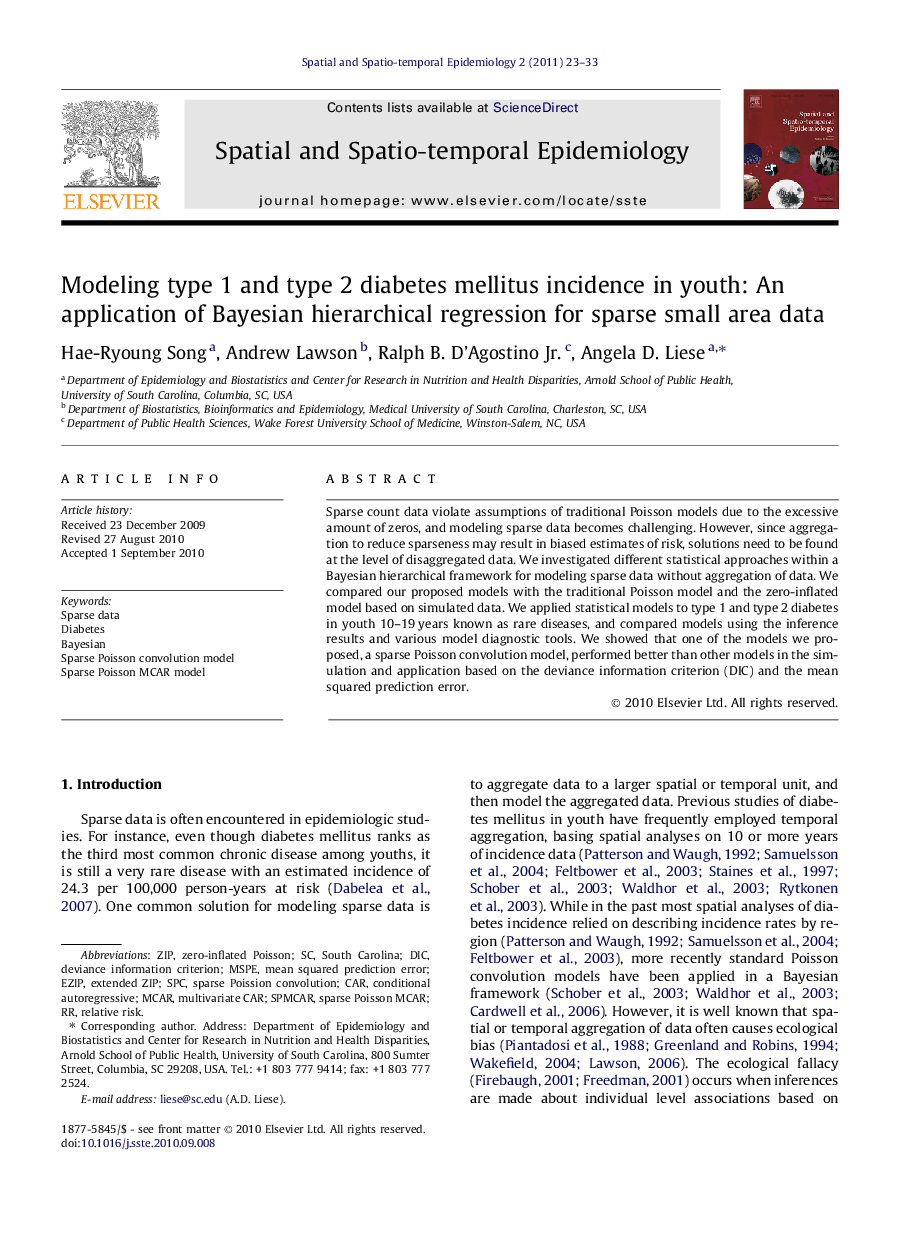| Article ID | Journal | Published Year | Pages | File Type |
|---|---|---|---|---|
| 1064401 | Spatial and Spatio-temporal Epidemiology | 2011 | 11 Pages |
Abstract
Sparse count data violate assumptions of traditional Poisson models due to the excessive amount of zeros, and modeling sparse data becomes challenging. However, since aggregation to reduce sparseness may result in biased estimates of risk, solutions need to be found at the level of disaggregated data. We investigated different statistical approaches within a Bayesian hierarchical framework for modeling sparse data without aggregation of data. We compared our proposed models with the traditional Poisson model and the zero-inflated model based on simulated data. We applied statistical models to type 1 and type 2 diabetes in youth 10-19Â years known as rare diseases, and compared models using the inference results and various model diagnostic tools. We showed that one of the models we proposed, a sparse Poisson convolution model, performed better than other models in the simulation and application based on the deviance information criterion (DIC) and the mean squared prediction error.
Keywords
Related Topics
Health Sciences
Medicine and Dentistry
Public Health and Health Policy
Authors
Hae-Ryoung Song, Andrew Lawson, Ralph B. Jr., Angela D. Liese,
